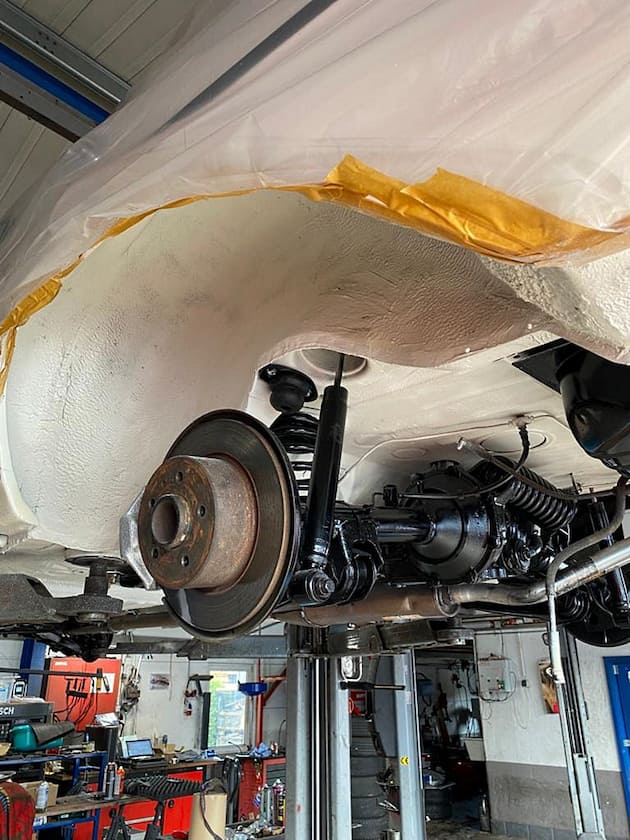Winter is just around the corner and with it the hardest season for cars. Moisture, ice, snow, grit and salt have a major impact on classic cars in particular, but not only on them. It can therefore be advisable to preserve the car on the underbody. That is how it goes.
Since many classics are not moved during the cold season and say goodbye to their well-protected winter quarters in October or November, many favorite models enjoy a feel-good treatment. A thorough wash is just a quick way to wash up and even polishing is often not enough. Car fans are only too happy to bring their oldtimer or youngtimer to an expert like Thomas Blecker in Grassau am Chiemsee. In the town of 7,000, Thomas Becker and his daughter Claudia run a workshop that specializes in the preservation of vehicles of all kinds.
The demand for preserving classics has risen sharply in recent years; The demand at Thomas Blecker is correspondingly high. A white Mercedes of the W 108 series is currently parked on the lifting platform in his workshop. From below, the elegant Mercedes looks like new – almost. “Take a look here,” says Thomas Blecker, scraping the tip of his screwdriver along a white-painted component underneath the radiator. The varnish is peeling off like the crust on a fresh croissant. “A bitumen-based preservative doesn’t last on PVC, wax is much better there,” says the bodywork master, who has been saving cars from rusting for more than four decades.
For the car enthusiast, preserving the underbody has significant advantages, because this is where the quality of a vehicle differs – especially in the case of older years of construction: “Oldtimer insurance requires a well-kept condition. Old, neglected vehicles rarely have a chance of getting cheap classic car insurance. Seen in this way, vehicle preservation has a positive effect on the wallet,” explains Markus Neser, Head of Motor Vehicle Operations, Vintage and Youngtimers at Württembergische Versicherung.
Anyone who thinks that the brown tin eater only hits old classics is wrong. Even younger models are affected by corrosion, since the preservation is often only superficial. Thomas Blecker experienced first-hand what that looks like at his second daughter’s SuV. “The axle carriers were completely rotten,” he says. It was a product of a German premium manufacturer.
Preserving a vehicle from below is a science in itself. Professionals first treat the vehicle with dry ice, which blasts away the dirt and encrustations at a temperature of minus 90 degrees without damaging the seals, the rubber on the cuffs or the sensitive control units. After that the vehicle is closely inspected and the rust spots sanded down and then treated with epoxy which seals the rust and it. In the next step, a 2K seal and underbody protection are applied, as well as wax for the PVC parts. If you want to protect your car from ice, snow, salt and corrosion, you have to reckon with a good 1,000 euros.
The supreme discipline in maintaining a vehicle remains cavity sealing. As with the underbody protection, all corners of the body are carefully inspected, especially those that are difficult to access. The experts use a special camera to search the vehicle frame, the interior of the doors or the door sills and immediately document rust damage with photos or videos. Only in this way is it possible to treat the affected areas precisely. After the treatment, this evidence is presented to the customer, who can also get a before and after picture. However, such a complex catalog of measures comes at a price of around 3,000 euros. Thomas Blecker has an unusual piece of advice for all motorists: “Save yourself the underbody wash in the car wash in winter. It’s useless because it doesn’t get to the sensitive areas and only calms the nerves. It is better to go directly into the wheel arches with the steam jet.”
